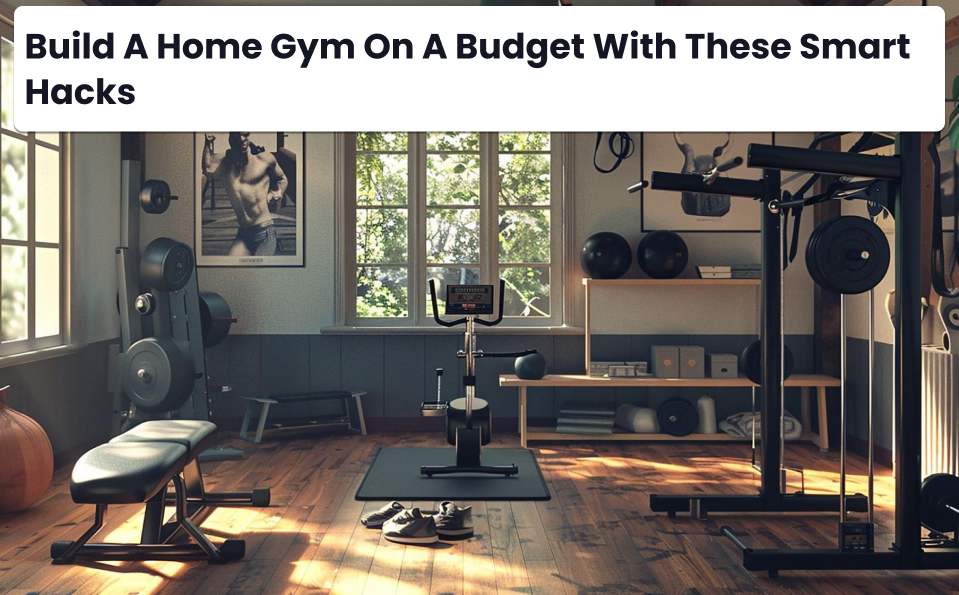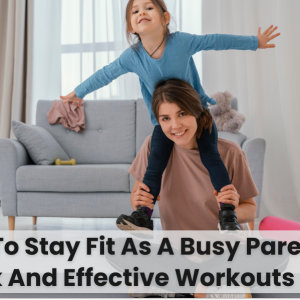
Build a Home Gym on a Budget with These Smart Hacks
Creating a home gym doesn’t have to be expensive. With the rise of remote work and a growing emphasis on personal wellness, building a budget-friendly workout space at home is more achievable than ever. Whether you live in the USA, Canada, or elsewhere, this guide will show you practical steps to create a simple gym that fits your budget while helping you achieve your fitness goals.
Why Build a Home Gym?
A home gym offers numerous benefits, especially for those with busy schedules or limited access to traditional gyms:
- Convenience: Work out anytime without worrying about gym hours.
- Cost Savings: Avoid recurring gym memberships with a one-time investment.
- Customization: Tailor your gym to meet your unique fitness needs.
- Privacy: Exercise in a comfortable, hygienic space at home.
Step 1: Choose the Right Space

You don’t need a lot of room for a home gym. Even a small, designated area can make a difference:
- Compact Spaces: A 6×6-foot area in a corner of your bedroom, garage, or living room can suffice.
- Vertical Storage: Use wall hooks or shelves to store equipment like resistance bands or jump ropes.
- Outdoor Option: Utilize your backyard or balcony for exercises like yoga or skipping rope.
Step 2: Invest in Affordable Equipment
Starting with simple and cost-effective tools can help you stay within budget:
- Resistance Bands ($10–$30): Versatile for strength training and mobility exercises.
- Dumbbells or Adjustable Weights ($30–$100): Essential for building strength with adjustable options to save space.
- Yoga Mat ($10–$25): Perfect for stretching, yoga, and floor exercises.
- Jump Rope ($5–$15): A great cardio tool requiring minimal space.
- Kettlebells ($20–$50): Ideal for full-body strength workouts.
- Pull-Up Bar ($20–$40): Fits over most door frames for upper-body exercises.
Step 3: Focus on Bodyweight Exercises
Bodyweight workouts are effective and free! Incorporate these into your routine:
- Push-Ups: Build upper body strength and core stability.
- Squats: Strengthen your legs and glutes.
- Planks: Enhance core strength and posture.
- Burpees: Boost endurance with a full-body workout.
Many fitness apps and YouTube channels offer free bodyweight workout tutorials to guide your training.
Did You Know?
- The average gym membership costs $50 per month, totaling $600 annually. By investing in a home gym, you could save significantly over time.
- Bodyweight exercises are among the most effective fitness methods—push-ups alone engage multiple muscle groups simultaneously.
- According to studies, working out at home increases workout consistency compared to gym users.
Step 4: Try DIY Equipment
Save money by creating your own gym tools:
- Weighted Sandbags: Fill an old duffel bag with sand or rice for strength exercises.
- Water Bottles: Use large bottles as makeshift dumbbells.
- Towels as Sliders: Perfect for core and lower-body workouts on hard floors.
Step 5: Affordable Cardio Options
You don’t need expensive machines for cardio. Try these budget-friendly alternatives:
- Jump Rope: One of the most effective cardio tools for improving heart health.
- Stairs: Run or walk up and down stairs for a great lower-body workout.
- HIIT Workouts: High-intensity interval training can be done in short bursts without equipment.
- Step 6: Look for Second-Hand Equipment
Second-hand fitness equipment is a cost-effective way to stock your home gym. Check local marketplaces like Craigslist, Facebook Marketplace, or thrift stores for deals on gently used weights, kettlebells, and other tools.
Keep Your Gym Organized
A clean and organized workout space keeps you motivated:
- Use storage bins, shelves, or racks to store your equipment.
- Maintain a clutter-free environment to ensure a pleasant workout experience.
Final Thoughts
Building a home gym on a budget is not only possible but highly rewarding. Start small, focus on exercises you enjoy, and gradually add affordable equipment as you progress. With dedication and creativity, you can create a personal workout space that supports your fitness goals while saving time and money.




